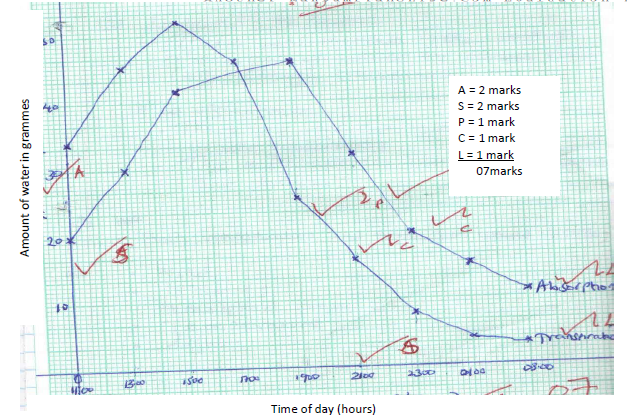
Powered by: www.manyamfranchise.com
(b) 17:00 – 19:00
(c) (i) 11:00 – 19:00 hours
- There was rapid increase in the rate of transpiration;
- This was due to high light intensity;
- Also due to high temperature;
(ii) 11:00 – 19:00 hours
- There was increase in the rate of absorption of water to replace water lost through transpiration;19:00 – 3:00 hours
- There was decrease in the rate of water absorption.
- This is because the rate of transpiration had declined;
(d) Both transpiration and absorption would decline;
(e) - Wind;
- Humidity;
- Atmospheric pressure;
- Temperature;
- Light;
(f) - Wind – The rate of transpiration is faster when it is windy and lower when air is still;
- Temperature – Rate of transpiration is high at high temperature and low at low temperature;
- Humidity – When humidity is low, the rate of transpiration is faster while the rate of transpiration is low when humidity
is high;
- Atmospheric pressure – The rate of transpiration is high when atmospheric pressure is low while at high atmospheric
pressure, the rate of transpiration is low;
- Light intensity – It affects photosynthetic rate hence opening and closing of stomata that allows for water loss;
sharon kalunda answered the question on
May 28, 2019 at 05:32